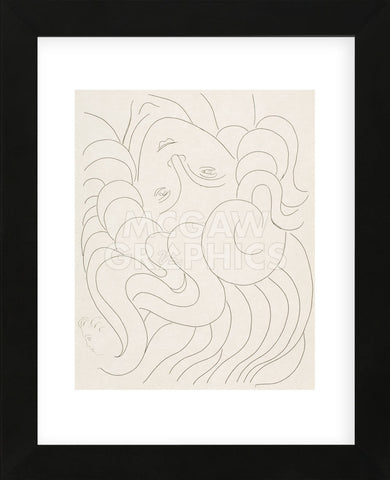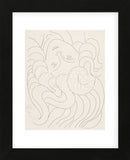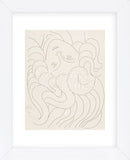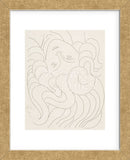Product Detail
- Overall: 16" H x 13" W x 0.75" D
- Overall Product Weight: 2.5lb.
- Material: Glass
- High-quality print on heavy paper
- Printed with vibrant, color-fast inks
- Framed in a contemporary style molding; available in black, gold, and white
- Sawtooth hanger
- Unmatted
© 2025
Succession H. Matisse/Artists Rights Society (ARS), New York
Product Detail
- Overall: 16" H x 13" W x 0.75" D
- Overall Product Weight: 2.5lb.
- Material: Glass
- High quality print on heavy paper
- Printed with vibrant, color-fast inks
- Framed in a contemporary style molding; available in black, white, and gold
- Sawtooth hanger
- Unmatted
About the Artist
Matisse is often regarded as the most important French painter of the 20th century. As a master of supreme decoration and expressive use of color, his visionary experiments into different styles of painting from his impressionistic domestic and figurative subjects to his abstract cut-outs changed our perception of the world.
Early in his career, Matisse was viewed as a Fauvist (a group of artists known as the "wild beasts"). His work gravitated to the beautiful and his celebration of bright colors reached its peak in 1917 when he began to spend time on the French Riviera at Nice and Vence. Matisse’s Fauvist years were superseded by an experimental period, as he abandoned three-dimensional effects in favor of dramatically simplified areas of pure color, flat shape and strong pattern.
As a man of nervous temperament, he coaxed his anxious tension into serenity through painting. In his later years, Matisse moved into a period of selfless invention, creating his cut-outs carved in colored paper and sometimes collaged into vast pictures. The geometric rightness and color radiance of these pictures sum up his greatest gift: his innate knowledge of how colors and shapes could come to life spectacularly when set in context.





